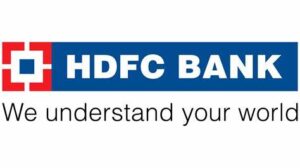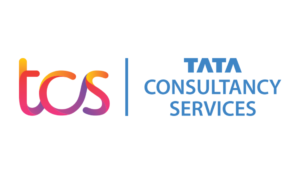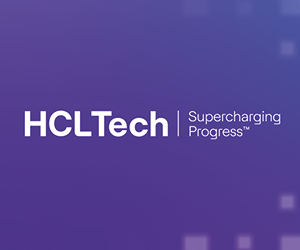In the exhilarating world of sports, athletes become more than just competitors—they transform into global icons. Their achievements, charisma, and marketability contribute to their immense wealth and influence.
Let’s delve into the lives of some of The World’s Highest-Paid Athletes exploring their careers, earnings, social media presence, and brand value.
1. Cristiano Ronaldo dos Santos Aveiro

Career Achievements
- Widely regarded as one of the greatest footballers of all time.
- Five-time Ballon d’Or winner (FIFA Player of the Year).
- Holds numerous records, including most goals in UEFA Champions League history.
- Has played for top clubs like Manchester United, Real Madrid, Juventus, and Al-Nassr.
Payment and Salary:
- Ronaldo’s current salary at Al-Nassr is estimated to be around £173 million annually.
Instagram Followers:
- He is the most-followed person on Instagram, with over 628 million followers.
Cristiano Ronaldo Net Worth:
- As of 2024, his net worth is around $500 million.
- Advertising Cost:
- Ronaldo can command as much as $1.6 million for a sponsored post on Instagram.
Brand Value:
- His brand, CR7, is estimated to be worth over $100 million globally.
Ronaldo’s influence extends beyond the football pitch, making him a true icon in the world of sports and business
2. Lionel Andrés Messi

Career Achievements:
- Eight-time Ballon d’Or winner.
- Winner of multiple FIFA The Best Men’s Player awards.
- Record holder for the most goals in La Liga and UEFA Champions League.
- 2022 FIFA World Cup champion with Argentina.
Payment:
- As of 2024, Messi is the highest-paid player in Major League Soccer with a guaranteed yearly pay of $20.4 million.
Instagram Followers:
- Messi has over 500 million followers on Instagram, making him one of the most followed individuals on the platform.
Lionel Andres Messi Net Worth:
- In 2024, Lionel Messi’s net worth is estimated to be around $600-$650 million.
Advertising Cost:
- Messi’s cost for appearing in a 60-second Super Bowl ad is reported to be around $14 million.
- He charges approximately €1.75 million for each sponsored post.
Brand Value:
- Brands associated with Messi have seen significant increases in market value, with some reports indicating a rise of at least 42 billion pounds during the World Cup.
- His lifetime deal with Adidas and endorsements with other major brands contribute to his high brand value.
Lionel Messi’s unparalleled success on the football field and his massive global following have made him a highly sought-after figure for brand endorsements and collaborations
3. Kylian Mbappe Lottin

Career Achievements:
- Winner of the “Golden Boy” Award in 2017.
- Winner of the “Kopa Trophy” Award in 2018.
- Winner of the “FIFA World Cup Best Young Player” Award in 2018.
- Winner of the “French Player of the Year” Award in 2018.
- Winner of the “Onze de Bronze” Award in 2019.
- Ligue 1 “Young Player of the Year” Award in 2016–17, 2017-18, and 2018-2019.
Market Value:
- Mbappé’s market value is estimated to be around €180 million.
Kylian Mbappe Net Worth:
- As of 2024, Kylian Mbappé’s net worth is estimated at around $180 million.
Instagram Followers:
He has an impressive following on Instagram with 113.1 million followers and an engagement rate of 3.06%.
Advertising Cost:
- Mbappé’s advertising cost varies depending on the campaign and brand. However, he is one of the highest-paid athletes globally, with lucrative deals from brands like Nike, EA Sports, and Hublot.
Brand Value:
- As the face of French soccer, Mbappé’s brand value is significant. His endorsements, achievements, and global popularity contribute to his brand’s worth.
Kylian Mbappé’s impact on and off the pitch has solidified his status as a football superstar and a valuable asset for brands worldwide
4. LeBron Raymone James

Career Achievements:
- Four-time NBA champion (Miami Heat, Cleveland Cavaliers, Los Angeles Lakers).
- NBA Finals MVP multiple times.
- NBA All-Star numerous times.
- NBA Rookie of the Year (2004).
- NBA scoring leader.
- Olympic gold medals as a member of the U.S. men’s national team.
Payment:
- LeBron James is the highest-paid player in the NBA, earning over $111.2 million this season from his Lakers salary and off-court endorsements.
Instagram Followers:
- LeBron James has over 100 million followers on Instagram, surpassing the combined followers of several major U.S. sports leagues.
LeBron Raymone James Net Worth:
- As of 2024, LeBron James’s net worth is estimated to be around $1 billion.
Advertising Cost
- LeBron’s endorsement deals with brands like Nike, PepsiCo, and Samsung have significantly contributed to his brand value and consumer perception.
- His lifetime deal with Nike has resulted in the successful LeBron signature shoe line, generating hundreds of millions of dollars annually.
- He has also taken equity in brands he works with, including Beats by Dre.
LeBron James’s impact extends beyond the basketball court, making him a global icon and a billionaire athlete.
5. Santos Saul “Canelo” Alvarez Barragan

Career Achievements:
- Multiple world championships in four weight classes from light middleweight to light heavyweight.
- Unified titles in three weight classes and lineal titles in two.
- First boxer to become undisputed champion at super middleweight.
- Notable victories over Gennady Golovkin, Danny Jacobs, Sergey Kovalev, and more.
- The recent win against Jaime Munguia solidified his status as a signature fighter of this era.
Payment:
- Estimated salary of $85 million.
- Known for making tens of millions of dollars per fight.
Instagram Followers:
- Approximately 17.3 million followers.
Santos Saul “Canelo” Alvarez Barragan Net Worth:
- Estimated to be more than $275 million in 2024.
- Other sources estimate it to be around $500 million.
Advertising Cost:
- Canelo’s advertising cost varies, but he is known to command significant fees for endorsements and appearances.
Brand Value:
- Owns a taco restaurant, and promotes boxing matches, concerts, and other events.
- Has his clothing line and partnerships with major brands like Hennessy.
- Involved in real estate investments, reportedly making nearly $20 million a year from them.
- Has a major sponsorship deal with Anheuser-Busch worth an estimated $2 million annually.
Canelo Álvarez’s prowess in the boxing ring and his strategic business ventures have made him one of the wealthiest and most influential athletes in the world.
6. Dustin Hunter Johnson

Career Achievements:
- Two major championships: the 2016 US Open and the 2020 Masters Tournament.
- Former World No. 1 in the Official World Golf Ranking.
- Notable for his powerful drives and consistency on the course.
- Joined the LIV Golf series in 2022 after a successful 15-year campaign in the PGA Tour.
Payment:
- Johnson’s salary has been substantial, especially with his move to the LIV Golf series, which reportedly came with a significant upfront payment.
Instagram Followers:
- He has over 1.2 million followers on Instagram, showcasing his popularity and reach.
Net Worth:
- As of 2024, Dustin Johnson’s net worth is around $100 million.
Advertising Cost:
- While specific figures for his advertising costs are not publicly disclosed, his endorsement deals with major brands like TaylorMade and Hublot indicate that he commands a high price.
Brand Value:
- Johnson’s brand value has increased considerably due to his success and visibility in the sport. His move to LIV Golf has also impacted his brand, leading to new endorsements and business opportunities.
Dustin Johnson’s transition from PGA Tour to LIV Golf has been a significant shift in his career, affecting his sponsorships and brand value, but he remains a key player in the golfing world.
7. Phil Alfred Mickelson

Career Achievements:
- Winner of six major championships and 45 PGA Tour titles.
- Known for his left-handed swing and remarkable consistency.
- Inducted into the World Golf Hall of Fame in 2012 based on his impressive record.
Payment:
- Estimated to have earned nearly $90 million in prize money over his career.
- His move to the Saudi Arabia-backed LIV Golf series has taken his off-the-field earnings to nearly $800 million after signing a massive contract reportedly worth $200 million.
Instagram Followers:
- Phil Mickelson has approximately 1.2 million followers on Instagram, making him a popular figure in the golf space.
Net Worth:
- As of 2024, Phil Mickelson’s estimated net worth is around $300 million.
- His off-the-course earnings come from brand endorsements, including partnerships with Rolex, Mizzen + Main, Intrepid Financial Partners, VistaJet, Greyhawk Golf Club, and Melin.
Advertising Cost:
- While specific figures for his advertising costs are not publicly disclosed, Mickelson’s endorsement deals and brand partnerships indicate that he commands a high price
8. Wardell Stephen Curry II

Career Achievements:
- Four-time NBA champion with the Golden State Warriors.
- Two-time NBA Most Valuable Player (MVP).
- NBA Finals MVP.
- Ten-time NBA All-Star.
- Holds the record for the most three-pointers made in NBA history.
- Named the 2023-24 Clutch Player of the Year.
Payment:
- Curry’s salary for the 2023-24 season is reported to be $51.9 million.
Instagram Followers:
- As of the latest data, Stephen Curry has over 45.6 million followers on Instagram.
Wardell Stephen Curry Net Worth:
- In 2024, Curry’s net worth is estimated at around $160 million.
Advertising Cost:
- The cost for advertising associated with Stephen Curry can vary, but he has been known to command significant fees for endorsements and appearances.
Brand Value:
- Curry has a significant brand value, with his partnership with Under Armour reportedly worth $20 million.
- The Golden State Warriors’ brand value has increased dramatically during Curry’s tenure, from $315 million to $8.2 billion.
Stephen Curry’s influence on basketball and his off-court ventures have made him one of the most recognizable and valuable athletes in the world.
9. Roger Federer

Career Achievements:
- 20 Grand Slam singles titles, including a record 8 Wimbledon titles.
- A career Grand Slam winner, having won all four Grand Slam tournaments.
- 310 weeks spent as the world No. 1 in the ATP rankings.
- Renowned for his versatility across all playing surfaces.
Payment:
- Federer has won over $130 million in prize money throughout his career.
Instagram Followers:
- As of the latest data, Federer has 12.3 million followers on Instagram.
Roger Federer Net Worth:
- In 2024, Federer’s net worth is around $550 million.
Advertising Cost:
- Federer’s advertising cost is significant, given his status as one of the most marketable athletes. He has earned up to $94 million per year in endorsements.
Brand Value:
- Federer’s brand value is immense, having been named the top global athlete brand with a value of $37 million a year.
Roger Federer’s legacy extends beyond his on-court achievements, with a brand that symbolizes excellence, precision, and elegance.
























